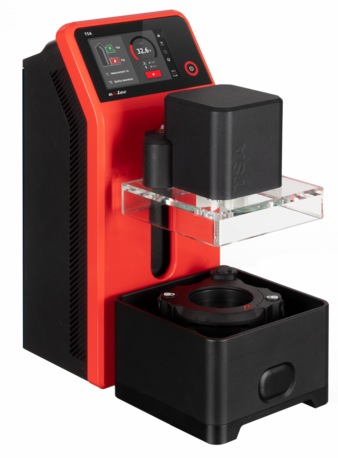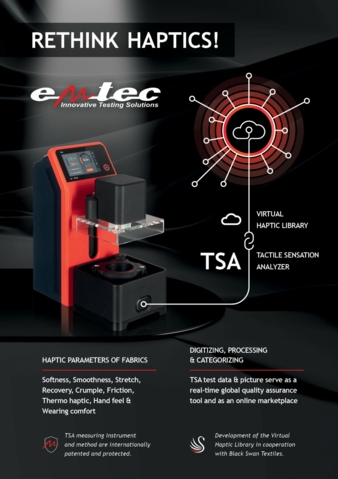16.04.24 – Redefining textile haptic analysis
Emtec Electronic at Functional Fabric Fair Spring 2024
From April 17th-18th, the Oregon Convention Center in Portland opens its doors to showcase the latest products and technologies in the textile industry. German manufacturer of specialized testing equipment, emtec Electronic, will be on-site to support the textile and apparel sourcing community in the U.S. market, presenting the Tactile Sensation Analyzer´s capabilities and its benefits when used in conjunction with the cloud-based library.
The haptic quality of textiles is an important parameter, not only for consumers but also for textile producers. Human touch testing is subjective and often yields unreliable results.
Emtec´s “TSA” (Tactile Sensation Analyzer) addresses this challenge by providing an objective number on how a fabric subjectively feels to the touch. The device boasts high accuracy, aligning with results from traditional hand panel testing methods conducted by “touch experts” with a correlation of up to 100%. Beyond evaluating softness, smoothness, stretch, and recovery (which can be determined in under two minutes), it also measures additional tactile parameters, such as thermo-haptic, friction, and crumple or drape behavior. Moreover, a camera has been included to provide optical analysis of a sample.
Accompanying the “TSA” is the “Virtual Haptic Library”, a cloud-based database engineered to digitize and categorize sample data. When used in conjunction with the “TSA”, this platform enables real-time global accessibility to haptic test results. Manufacturers can compare samples and detect deviations in set haptic parameters, facilitating enhanced transparency, traceability, and efficiency in the supply chain.
Furthermore, Alexander Gruener, Global Business Development Manager at emtec, expressed the significance of these innovations: “Technologies like our ‘TSA’ device and ‘Virtual Haptic Library’ provide textile manufacturers with invaluable insight into their product´s tactile properties, enabling data-driven decisions that enhance quality and streamline production. By quantifying and digitizing touch parameters, the need to ship samples globally for haptic validation is eliminated, resulting in a rapid return on investment and improved production efficiency.”
Ultimately, an objective evaluation of haptic parameters is crucial for clear communication of product specifications across locations and is helping companies to reach their sustainability goals by mitigating waste and preventing entire collections from failing in stores.


